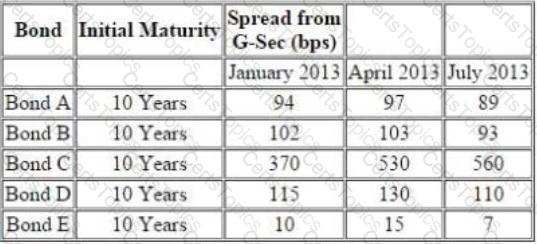In a weakening economy, which of the following is least accurate?
The following information pertains to bonds:

Further following information is available about a particular bond ‘Bond F’
There is a 10.25% risky bond with a maturity of 2.25% year(s) its current price is INR105.31, which corresponds to YTM of 9.22%. The following are the benchmark YTMs.

From the time January 2013 to April 2013, what can you predict about the market conditions, assuming the GSec has not changed?
Proportion of fee based income is examined as the same is an _____ efficient source of bank’s profitability.
The longer the term to maturity of bond: